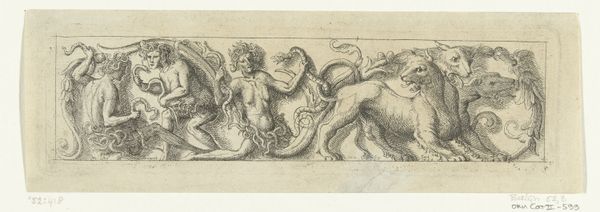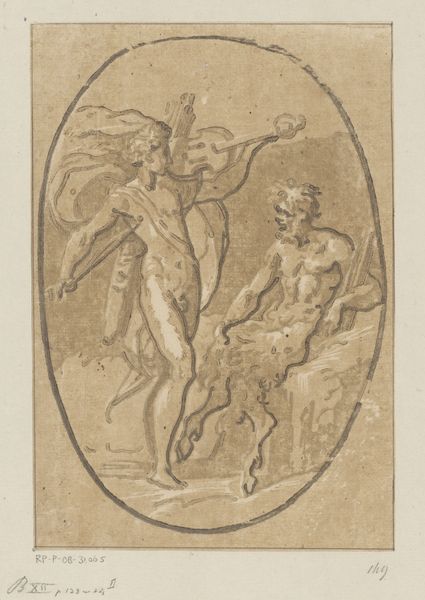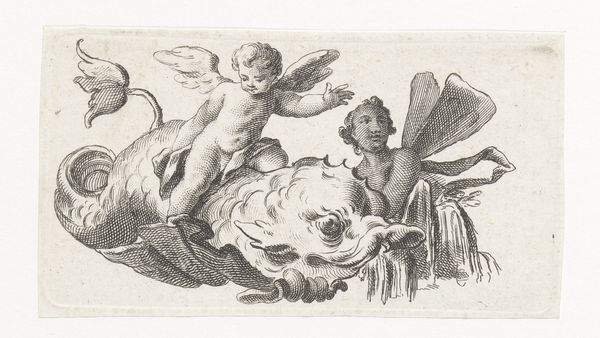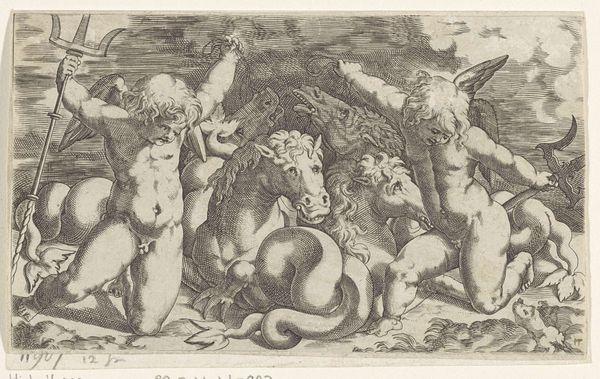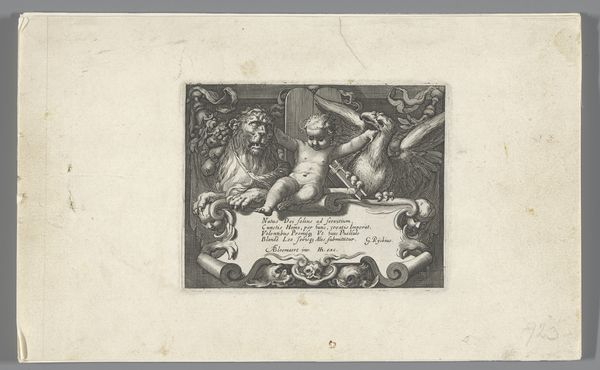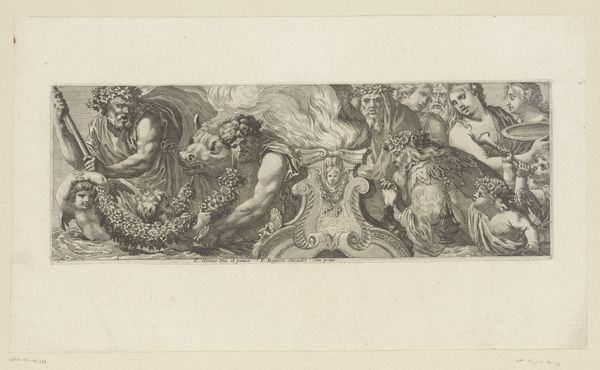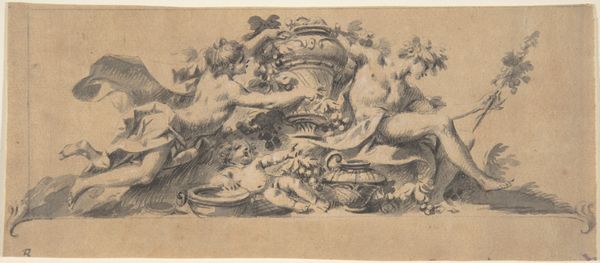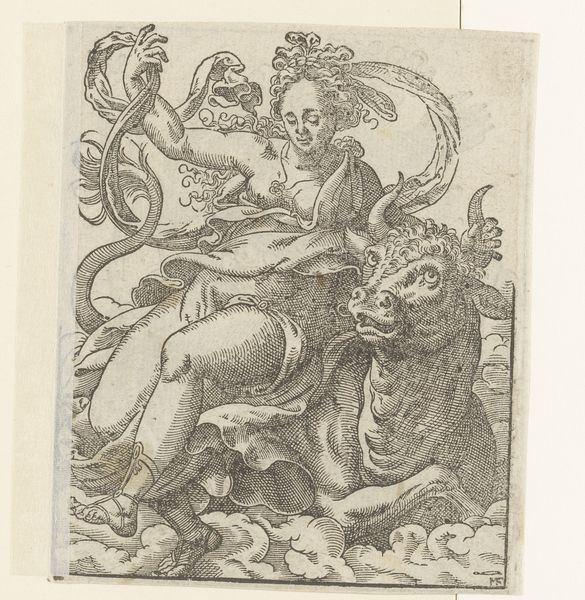
drawing, ink, engraving
#
drawing
#
light pencil work
#
narrative-art
#
pen sketch
#
pencil sketch
#
mannerism
#
figuration
#
personal sketchbook
#
ink
#
sketchwork
#
ink drawing experimentation
#
pen-ink sketch
#
mythology
#
sketchbook drawing
#
pencil work
#
history-painting
#
sketchbook art
#
engraving
Dimensions: height 89 mm, width 118 mm
Copyright: Rijks Museum: Open Domain
Curator: Here we have an engraving from 1584, titled "Neptunus en zijn vrouw Amphitrite". It's currently attributed to an anonymous artist. Editor: It strikes me as remarkably intimate. The lines are so fine, yet they capture the heft and form of these mythological figures so effectively. Curator: Well, engravings during that era were certainly prized for their precision and the reproducibility they offered. You can see the engraver meticulously building form with cross-hatching and varied line weights, turning base metals into coveted luxury objects and collectibles. Consider how the pressure applied and the type of burin used affected the distribution of ink, hence determining the look and feel of the figures. Editor: Indeed. I'm drawn to the implied power dynamics at play here, it feels subtly subversive for its time. Amphitrite, Neptune’s wife, is often depicted as a passive figure, but here she possesses this palpable, almost confrontational gaze. We’re forced to consider her agency in this marine partnership and by extension, the expectations and restrictions placed upon women in the patriarchal structures of 16th-century Europe. Curator: That's a valid perspective. Thinking about the consumption of such imagery adds another layer. Prints like these weren't just aesthetic objects; they were social commodities, often signaling status and education among the burgeoning merchant classes and nobility. Consider their display – framed on walls or collected in albums – projecting narratives of wealth and learnedness. The paper itself, the ink composition—these materials held value and bespoke levels of craftsmanship. Editor: I also can’t ignore the rather obvious imperialistic undertones that come with romanticizing mythological narratives when these are produced during the peak of European maritime expansion. Neptune and his trident represent power over the oceans, literally mirroring how European monarchs saw and exerted dominion over the world at that moment. I mean, the fish skewered on that trident cannot simply be innocent ornamentation; they embody a claim of control over maritime resources, violently extracted. Curator: It’s a vital consideration indeed. By considering these prints not in isolation, but as interconnected pieces within broader socio-economic networks, we understand that materials alone only tell half the story. The economic investment and social prestige tied to artworks like this shed light on a powerful social class eager to emulate classical power. Editor: Precisely, placing "Neptune and Amphitrite" into dialogue with contemporary historical context empowers viewers to deconstruct and engage in conversation on art. Curator: Very true; I’ll never look at an old master print quite the same way again.
Comments
No comments
Be the first to comment and join the conversation on the ultimate creative platform.
